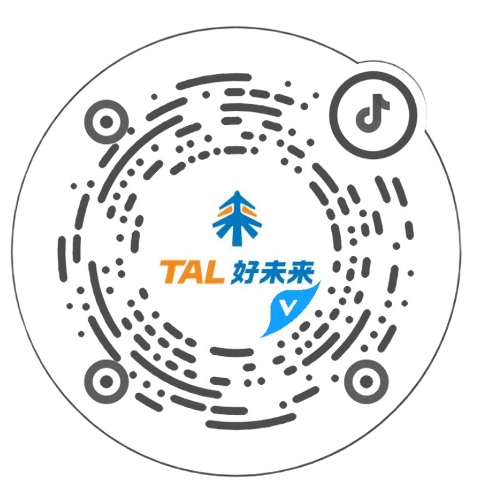




On July 18, "AI Education, Open Future" - the 2019 TAL Education Intelligent Conference was held in Beijing. More than 600 education scholars, industry experts, and partners gathered to discuss forward-looking industry topics such as future trends in education. Bai Yunfeng, President of TAL Education Group, attended the conference and delivered a keynote speech on "Exploring the Open Future of Education."

Bai Yunfeng, President of TAL Education Group, delivered a keynote speech on "Exploring the Open Future of Education"
Key points:
TAL Education has always adhered to two educational concepts: helping to promote "more equitable and quality education"; cultivating virtues in students and providing "more suitable education" for children.
The advancement of technology is a better way to solve the popularization of education. TAL Education hopes to use (teaching + education) * AI to achieve "fairness" and "quality" in education by improving efficiency and enhancing the experience.
Education will shift from "teacher-centered" to "student-centered." With the progress of technology, teachers will gradually be liberated from repetitive labor and be able to focus more on the essence of education and play a role in "inspiring, guiding, and accompanying."
Our goal for the future is to enable children to have upright, kind, and honest character, possess a compass for cognitive exploration, independent thinking, and the ability to achieve happiness.

Bai Yunfeng, President of TAL Education Group, shares his thoughts on the future of education
Below is a transcript of the speech:
Respected academicians, experts, partners, and media partners:
Good afternoon, everyone!
I am very pleased to share TAL's exploration in the field of "AI + Education" here, and I hope to have the opportunity to work with all partners to create a better future for education.
I. Two educational concepts that TAL Education has always adhered to
In his report to the 19th National Congress, General Secretary Xi Jinping explicitly stated, "We must strive to ensure that every child has access to a fair and quality education." In the 16 years of exploration, TAL Education has always adhered to two educational concepts: helping to promote "more equitable and quality education"; cultivating virtues in students and providing "more suitable education" for children.
In a vast country like China, "fairness" needs to minimize differences in location, and wealth, allowing children to have equal and homogeneous educational opportunities; "quality" requires children to have higher efficiency within a basic time frame, better developed literacy, and gain more knowledge and joy.
I have been in the education industry for 18 years, worked as a teacher on the front line, and helped local teachers and parents. However, the power of TAL Education is very small, so how can we meet the learning needs of students?
I believe that while respecting the inherent rules of education, we should use technology to solve the issues of fairness and quality in education. The advancement of technology is a better way to solve the popularization of education. In the future, we hope to use (teaching + education) * AI, leverage the multiplying effect of AI, equip "teaching" and "education" with technology, and achieve "fairness" and "quality" in education by improving efficiency and enhancing the experience.
II. Two driving forces for social development
In the past 40 years, China's reform and opening up has achieved unparalleled accomplishments.
In the 40 years of reform and opening up, China's economic total has increased from 1.8% to 15%, breaking through $12 trillion; per capita GDP has increased from ranking among the bottom seven globally with less than $155 to $9480; the Engel coefficient has decreased from 63.9% to 29.3%, dropping below 30% for the first time; there were no Fortune 500 companies 40 years ago, and now there are 115, including 25 private enterprises; 40 years ago, China's middle class was close to zero, and now there are 250 million.
From this, we can see the tremendous changes in China's economy. The reasons behind this are, first, institutional innovation; second, technological change. The difference between the two is that the former is closely related to human factors and is reversible, while the latter is not reversible and does not shift according to human will.
The economy is the speed of social development, and education is the acceleration of social development. In the past 40 years, China's economy has undergone tremendous changes, but the basic education units carried by basic education have not fundamentally changed. The rate of change in education lags behind the rate of economic development.
III. Today's way of thinking will determine the future of education
What kind of changes can "AI + Education" bring to students? We believe that today's way of thinking will determine the future of education. TAL Education has two basic viewpoints.
First, "data + intelligence" is the basis for changing from "uniform" to "individualized" education, and has the potential to change the way students learn.
Second, "division of labor + cooperation" is the core of transitioning from "teacher-centered" to "fostering future generations." Education will shift from "teacher-centered" to "student-centered" and from "teacher-centered" to "student-centered."
As a member of the education industry, TAL Education discovered two key parameters for changing the industry during the 16 years of exploration - "efficiency" and "experience." "Individualized education" solves the problem of how to match high-quality educational resources with the supply side. However, there are certain deviations in the development of "efficiency" and "experience." So, how do we develop "efficiency" and "experience" better? The answer is "technology."
So today, we are proposing "New Science and Education, New Future." Our understanding of the future of science and education comes from "technology," "openness," and "cooperation."
TAL Education has a research team of over 5,000 people with research and development funding of over 1 billion yuan. TAL Education has established joint laboratories with renowned universities at home and abroad, including Tsinghua University and Stanford University, and reached cooperation agreements with Beijing Normal University in the field of brain science and cognitive science. In 2017, TAL Education established the AI Lab, in 2018, it set up a research and development department in Silicon Valley, and in 2019, it established the education industry's first post-doctoral research work station.
Our future goal is not only to satisfy TAL's students but also to establish a good educational ecosystem through "openness" and cooperation with partners. At the same time, we hope to cooperate with the industry for mutual benefit, leverage complementary advantages, and lay a solid foundation for the upgrading and replacement of China's basic education.
Every educator shares a common goal - to ensure that children have upright, kind, and honest character, possess a compass for cognitive exploration, independent thinking, and the ability to achieve happiness. Therefore, all TAL employees will continue to work unremittingly and progress together with all educators. Thank you all!